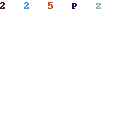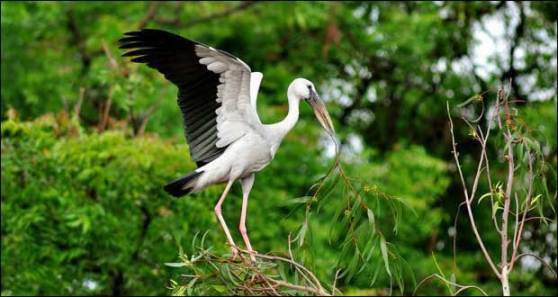
TAJ MAHAL
The Taj Mahal in Agra near New Delhi the Capital of India is one in the 7 wonders of the world and indisputably the most famous example of Mughal architecture. Described by Rabindranath Tagore as "a tear on the face of eternity", it is in popular imagination a veritable.
The white-splendored tomb was built by Emperor Shah Jahan in the memory of his favourite wife, Arjumand Banu Begum, better known as Mumtaz Mahal ("Chosen of the Palace"). She married Shah Jahan in 1612 to become his second wife and inseparable companion, and died in childbirth at Burhanpur while on a campaign with her husband in 1629. Shah Jahan was, it is said, inconsolable to the point of contemplating abdication in favour of his sons. The court went into mourning for over two years; and Shah Jahan decided to commemorate the memory of Mumtaz with a building the like of which had never been seen before
The mausoleum is located on the right bank of the river Yamuna at a point where it takes a sharp turn and flows eastwards. Originally, the land where the Taj Mahal presently stands belonged to the Kachhwahas of Ajmer (Rajasthan). The land was acquired from them in lieu of four havelis as is testified by a court historian, Abdul Hamid Lahauri, in his work titled the Badshah-Namah and the firmans (royal decrees). For construction, a network of wells was laid along the river line to support the huge mausoleum buildings. Masons, stonecutters, inlayers, carvers, painters, calligraphers, dome-builders and other artisans were requisitioned from the whole of the empire and also from Central Asia and Iran. While bricks for internal constructions were locally prepared, white marble for external use in veneering work was obtained from Makrana in Rajasthan. Semi-precious stones for inlay ornamentation were brought from distant regions of India, Ceylon and Afghanistan. Red sandstone of different tints was requisitioned from the neighbouring quarries of Sikri, Dholpur, etc. It took 22 years(1631-1653) for the monument complex to be completed
In all,the Taj Mahal covers an area of 60 bighas, as the terrain gradually sloped from south to north, towards the river, in the form of descending terraces. At the southern point is the forecourt with the main gate in front and tombs of Akbarabadi Begum and Fatehpuri Begum, two other queens of Shah Jahan, on its south-east and south-west corners respectively called Saheli Burj 1 and 2.
On the second terrace is a spacious square garden, with side pavilions. It is divided into four quarters by broad shallow canals of water, with wide walkways and cypress avenues on the sides. The water channels and fountains are fed by overhead water tanks. These four quarters are further divided into the smaller quarters by broad causeways, so that the whole scheme is in a perfect char-bagh.
The main tomb of the Taj is basically square with chamfered corners. The minarets here are detached, facing the chamfered angles (corners) of the main tomb on the main plinth. Red sandstone mosque on the western, and Mehman-Khana on the eastern side of the tomb provides aesthetically a clear colour contrast.
The Taj has some wonderful specimens of polychrome inlay art both in the interior and exterior on the dados, on cenotaphs and on the marble jhajjhari (jali-screen) around them.
The exterior decorations of the Taj Mahal are among the finest in Mughal architecture. As the surface area changes, the decorations are refined proportionally. The decorative elements were created by applying paint, stucco, stone inlays or carvings. In line with the Islamic prohibition against the use of anthropomorphic forms, the decorative elements can be grouped into either calligraphy, abstract forms or vegetative motifs. Throughout the complex are passages from the Qur'an that comprise some of the decorative elements. Recent scholarship suggests that the passages were chosen by Amanat Khan.

Carving in the Wall of Taj Mahal
The calligraphy on the Great Gate reads "O Soul, thou art at rest. Return to the Lord at peace with Him, and He at peace with you." The calligraphy was created in 1609 by a calligrapher named Abdul Haq. Shah Jahan conferred the title of "Amanat Khan" upon him as a reward for his "dazzling virtuosity". Near the lines from the Qur'an at the base of the interior dome is the inscription, "Written by the insignificant being, Amanat Khan Shirazi." Much of the calligraphy is composed of florid thuluth script made of jasper or black marble inlaid in white marble panels. Higher panels are written in slightly larger script to reduce the skewing effect when viewed from below. The calligraphy found on the marble cenotaphs in the tomb is particularly detailed and delicate.

Abstract forms are used throughout, especially in the plinth, minarets, gateway, mosque, jawab and, to a lesser extent, on the surfaces of the tomb. The domes and vaults of the sandstone buildings are worked withtracery of incised painting to create elaborate geometric forms. Herringbone inlays define the space between many of the adjoining elements. White inlays are used in sandstone buildings, and dark or black inlays on the white marbles. Mortared areas of the marble buildings have been stained or painted in a contrasting color which creates a complex array of geometric patterns. Floors and walkways use contrasting tiles or blocks in tessellation patterns.
How to reach there
How to reach there
| Train: Agra is located in between the main train lines from Delhi to Mumbai and from Delhi to Chennai. It is like a junction and this makes Agra easy to reach by train from almost anywhere. From Delhi, you can reach Agra by train in about 2-3 hours by Bhopal Shatabdi, Bhopal Express, Malwa Express, Gondwana Express, Jabalpur – Jammutawi Express, etc. There are also luxury trains that stop at Agra such as Palace on Wheels. Agra has tree railway stations. The main one is Agra Cantt with the station code AGC. The second one is Agra Fort (AF) which is the oldest train station in India and trains to east and central India passes from this station. The third one a small station called Raja Ki Mandi, and Mahakoshal Express, Amritsar Express and Intercity Express. Detailed train information, schedules and prices can be found at http://www.indianrail.gov.in Road: Agra is 204 km away from the capital Delhi and is on the crossroads of national highways 2, 3 and 11. Ground transportation from Delhi to Agra takes approximately 3.5 - 4 hours. Taxies and busses are available from Delhi to Agra. Busses are always more economical than train and air transportation. The main bus stations in Agra are Idgah and Agra Fort and there are scheduled, air-conditioned and luxury busses from Delhi, Jaipur, Gualior, Jhansi and Lucknow. Driving to Agra is also easy and comfortable with new modern highways. From Delhi you can take the NH2 highway (200 km) , from Jaipur you can take number 11 ( 255km), from Gwailor the National highway which is 120 km and from Lucknow NH2 which is 285 km. |





